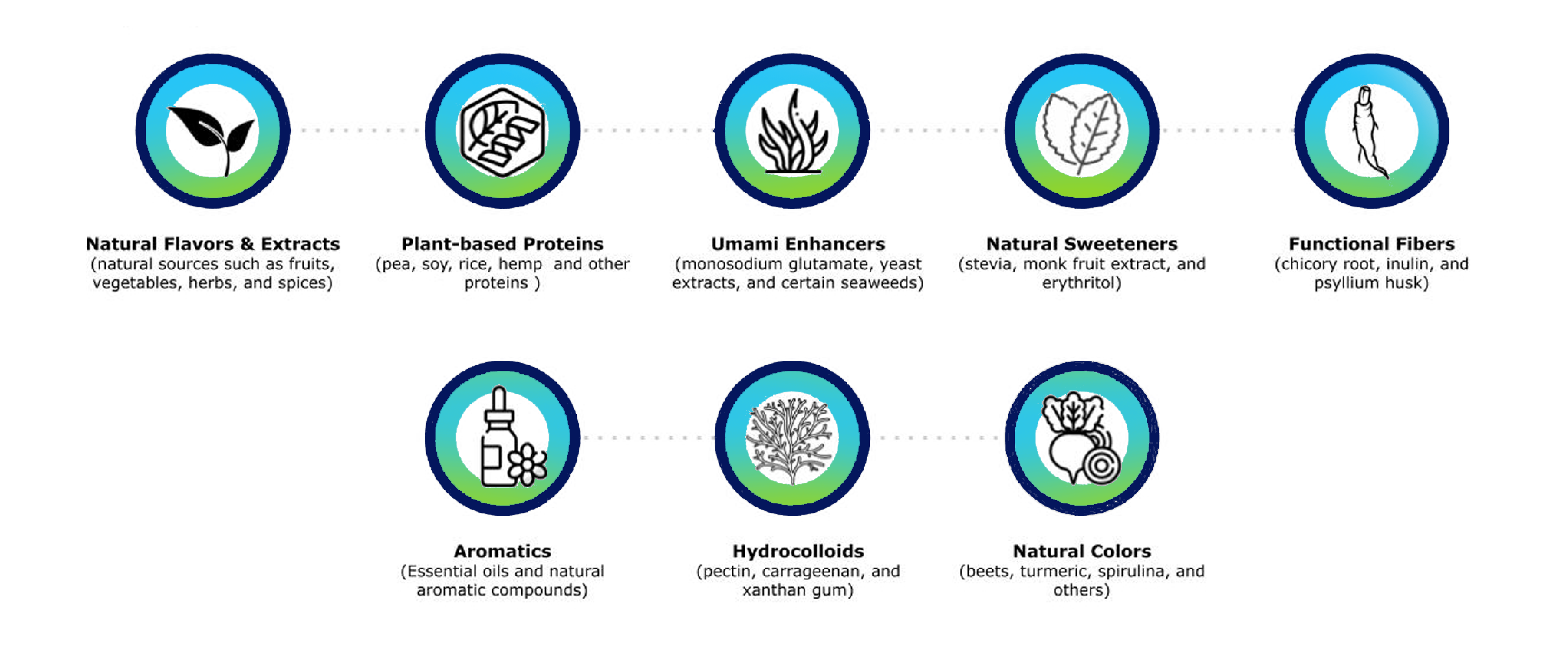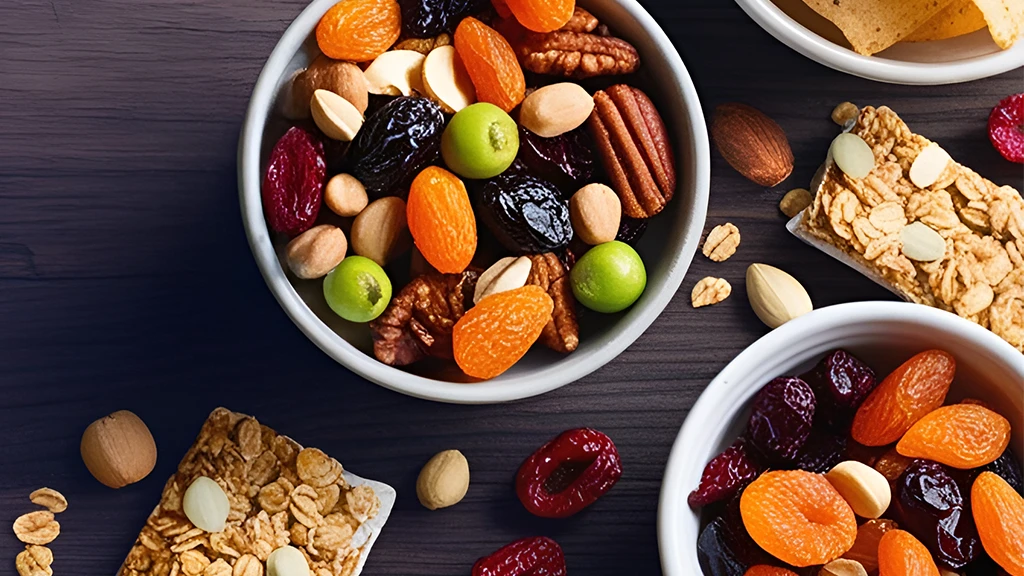Key Takeaways
- Role of sensory assessment to understand where the F&B industry is heading.
- Different ways to conduct sensory analysis.
- Advancements in sensory profile in terms of next-gen ingredients & technologies.
- Efforts of key F&B players & strategic collaborations in driving innovation across sensory profiles.
- Future outlook
Overview
The food and beverage (F&B) industry is an ever-evolving landscape, constantly driven by the quest to create products that taste delicious and deliver an unforgettable sensory experience. The sensory aspect of F&B products, encompassing taste, aroma, texture, and visual appeal, profoundly influences consumer preferences, product acceptance, and brand loyalty. As consumer demands and expectations evolve, so do the opportunities to innovate and elevate the sensory aspect of F&B products to new heights.
In recent years, advancements in sensory science and the emergence of next-generation ingredients have opened exciting possibilities for the F&B industry. Companies are now empowered to create products that not only tantalize the taste buds but also cater to health-conscious consumers, align with sustainability goals, and provide unique and personalized sensory experiences.
Sensory Experiences and Their Impact on Food Perception
Food products offer a unique and captivating sensory experience, engaging all human senses, such as vision, touch, hearing, smell, and taste. From the initial encounter to the final consumption, each step involves a symphony of sensory perceptions that contribute to the overall enjoyment and perception of the food.
Before the food even enters the mouth, people perceive its enticing aroma, setting the stage for the forthcoming sensory journey. Once in the oral cavity, taste and food flavors reach the olfactory epithelium through the retro-nasal pathway, further enriching the experience. The product’s texture also plays a crucial role, with individuals feeling its roughness, smoothness, stickiness, or elasticity during mastication. Beyond taste and texture, the auditory aspect comes into play. Biting generates distinctive sounds, like crunching or crackling, which can heighten the sensory experience.

The role of the senses in food perception extends beyond mere physical sensations. The sensory information received acts as a foundation for the overall food experience, influencing cognitive associations, evoking emotions, triggering actions, and shaping individual responses. By understanding the significance of sensory perception, we gain deeper insights into how consumers interact with food products and the various factors that contribute to their preferences and emotional responses.
Food Sensory Analysis and Its Importance
Sensory assessment—a scientific field utilizing various technologies—explores human reactions to the sensory aspects of food and beverages. Taste and smell, among the five senses, are of particular interest to researchers due to their substantial impact on eating behavior.
The importance of sensory assessment is evident in its application to various problem-solving scenarios, including:
- Development of new products: By utilizing sensory evaluation, companies can fine-tune their products to meet consumer preferences and create innovative offerings.
- Cost-cutting measures: Sensory analysis helps identify areas where cost reductions can be made without compromising product quality and consumer satisfaction.
- Increasing the level of quality: Understanding the sensory attributes of a product allows for quality improvements and ensures consistent performance.
- Product acceptability: Sensory testing helps determine whether consumers find a product appealing and acceptable for consumption.
- Quality assurance and control: Sensory assessment is valuable in ensuring that products meet specific quality standards and remain consistent over time.

Sensory assessment provides precise, quantitative data on product attributes and qualitative consumer feedback. This combination empowers companies to gain valuable insights into consumer preferences, facilitating informed decisions for product enhancement and marketing strategies.
Methods of Sensory Analysis
Sensory analysis in the F&B industry involves various methods for evaluating products’ sensory properties. The choice of method depends on the specific goals and characteristics of the product being evaluated.
Enhancing the F&B Sensory Profile with Next-generation Ingredients and Technologies
In today’s dynamic F&B landscape, the quest for exceptional sensory experiences has become a driving force behind innovation. As consumers seek novel tastes, enticing textures, and captivating aromas, the industry is embracing a wave of next-generation ingredients and state-of-the-art sensory technologies to elevate their offerings to new heights.
Key Stakeholders Revolutionizing the F&B Sensory Profile
Several key players in the F&B industry have been at the forefront of driving innovation in sensory profiles:
Kerry (Tastesense™ Advanced)
- Kerry launches Tastesense™ Advanced, a next-generation solution for low and zero-sugar products
- Promises unparalleled sweetness and full-bodied mouthfeel, exceeding 3° Brix sucrose sweetness equivalence
- Offers optimized flavor, improved mouthfeel, and reduced off-notes compared to traditional sugar and stevia alternatives
- Contains plant-derived materials for sustainability benefits
- Reduces carbon emissions by 30% and water usage by 45%
- Affordable alternatives to sugar and stevia, catering to consumers’ demand for superior taste and healthier food options
Angel Yeast (AngeoPro F80 Yeast Protein)
- AngeoPro F80 is a natural-origin yeast protein, free from any animal-derived components or allergens
- This exceptional protein source is obtained through an eco-friendly fermentation process, ensuring a high protein content
- When incorporated into plant-based foods, AngeoPro F80 not only enhances the taste but also boosts nutrition while effectively masking any undesirable off-notes
- High protein content (≥75%)
- Contains multiple vitamins, trace elements, and nutritional components
- Free from yeasty notes and off-notes
DSM (Vertis Textured Pea Canola Protein)
- The only soy-free textured vegetable protein with all nine essential amino acids, making it a complete protein
- Gluten-free and dairy-free
- Ideal for meat alternatives and plant-forward applications
- Short hydration time, easy to process
- Supports low-fat and low-salt formulations
- Boasts a firm, springy texture similar to traditional meat products
DuPont (Versilk Enzyme)
- Enhances texture and taste in yogurts, drinkable dairy products, and other fermented drinks
- The enzyme aids in achieving optimal viscosity, mouthfeel, and taste profile for indulgent products with health benefits
- Designed for high protein applications, allowing up to 14% protein in the final product, a 30% increase compared to common practices
- It is a native enzyme and a label-friendly processing aid, making it easy to implement into established yogurt production
- It can potentially improve flavor and fermentation time, depending on the protein base used
- It is versatile and can be used across various types of products, including dairy and plant-based yogurts
Firmenich (Flavor Encapsulation Technology)
- Durarome provides a natural, fresh sensory experience, preserving the authentic taste of products throughout their shelf-life, making it ideal for protecting oxidation-sensitive items like citrus and mango. It’s easy to use in manufacturing due to its quick dissolution in water and dust-free properties
- Flexarome enhances taste and pleasure by safeguarding flavor authenticity during rigorous manufacturing processes, like hot drinks and stock cubes
- Thermarome ensures the best taste authenticity even under extreme heat conditions during manufacturing and preparation, suitable for various applications like battered, coated, extruded, and fried products
- Captarome delivers high-quality dry flavors with an optimal taste-to-cost balance, using fewer flavor ingredients to reduce flavor, transportation, inventory, and handling expenses
Key Partnerships and Acquisitions Driving the Sensory Innovation
The key partnerships in the F&B industry are instrumental in driving sensory innovation and shaping the next generation of ingredients. These collaborations foster creativity, knowledge exchange, and resource sharing, ultimately leading to products that deliver exceptional sensory experiences to consumers while meeting the demands of a dynamic and ever-evolving market. As the industry continues to embrace the power of collaboration, the potential for sensory advancement in the F&B sector remains boundless.
Unraveling Growth Catalysts, Overcoming Hurdles, and Embracing Opportunities & Challenges
Consumers now seek more than just basic nourishment; they desire a fusion of tastes, textures, and scents that tantalize their palates and enhance their culinary experiences.
The F&B industry undergoes significant transformations as people explore global flavors, prompting companies to rethink ingredient sourcing and create unique and exciting food experiences for customers.
In Conclusion and Future Outlook
The next generation of ingredients presents a promising opportunity to elevate the sensory profile of F&B products. Sensory science and advanced analytical techniques will be pivotal in fostering innovation and aligning with consumer demands, particularly in areas such as customization, transparent labeling, plant-based protein options, eco-friendly packaging, the fusion of diverse flavors, nutritional enrichment, the Internet of Things (IoT), and intelligent packaging solutions. Collaboration and cross-industry partnerships will spur continuous improvement, shaping a delightful and diverse future for the F&B industry. As companies innovate to meet consumer preferences, the quest for enhanced sensory experiences opens a world of delectable possibilities for food enthusiasts worldwide.
Want to delve deep into this evolving subdomain of the F&B sector; improve the sensory profile of consumable items; and explore the potential business opportunities? Reach out to our F&B experts by filling out the form below or by emailing them at contact@iebrain.com.
Read the original blog, published in the “𝗙𝗼𝗼𝗱 𝗜𝗻𝗱𝘂𝘀𝘁𝗿𝘆 𝗘𝘅𝗲𝗰𝘂𝘁𝗶𝘃𝗲” news source platform, to decipher how delicious products are created that deliver an unforgettable sensory experience to consumers.
Original blog post link: https://foodindustryexecutive.com/2024/04/improving-the-food-beverage-sensory-profile-through-ingredients-and-innovations/







